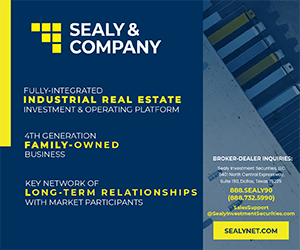As Housing Demand Softens, Could Building Prices Finally Peak?
June 28, 2022 | Paul Bergeron | GlobeSt.com
Given rising interest rates, housing demand is slowing, according to the National Association of Home Builders (NAHB), which pondered if prices for materials used in residential construction also will ease.
Construction materials costs have climbed nearly 20 percent, however that was “during a period of intense demand and insufficient supply—a reliable recipe for sky-high prices,” NAHB said.
It points to the “mercurial fall” in framing lumber prices in recent months as an indication (currently down 48% compared to one year ago) as a leading indicator.
However, NAHB Chief Economist Robert Dietz said that broader and more significant price declines for building materials will require more than rising interest rates to respond significantly.
“Higher interest rates will not produce more lumber, [and] smaller balance sheets will not increase the production of appliances and materials. In short, while the Fed can cool the demand-side of the economy (reducing inflation and growth), additional output on the supply-side is required in order to tame the growth in costs that we see in housing and other sectors of the economy.”
Drywall, Steel, Concrete, and Trusses Continue to Rise
At the same time, there is plenty of evidence that other materials prices show little sign of subsiding.
Michael Procopio, CEO, The Procopio Companies, tells GlobeSt.com, “While prices may have peaked temporarily, we anticipate that prices will continue to increase long-term. Lumber and plywood have come down, but we are still seeing pricing on items like drywall, steel, concrete, and trusses continue to rise.
“There also remains a major allocation and supply issue with many of the materials required. It’s likely that with the current housing shortage, continued demand for materials, inflation, and supply chain issues, we will not see a substantial decrease in pricing, if any, in the coming weeks and months.”
Emily Zhu, chief marketing officer, New Empire Corp., agrees, telling GlobeSt.com, “The real estate industry has experienced a continuous climb in costs over the last few years as a direct result of supply chain issues, the increased cost of labor, inflation, and uncertainty in the global market. As these factors have a direct impact on construction materials, we expect the price of lumber, steel, and other materials to follow a similar trajectory.”
No Signs of Softness in Asphalt, Concrete
Tom Donnelly, president, BrightView Landscape Development, tells GlobeSt.com that sitework-related inputs such as asphalt and concrete prices show no signs of softness.
“We are expecting PVC pipe and related components pricing to rise at a minimum 8 percent to 10 percent year-over-year. The best defense is getting to contract early with clients and getting the project needs bought out so prices can get fixed today for work that will be performed in six to 12 months.”
Colin Scott, vice president, Cumming Group, tells GlobeSt.com that he’s seeing steel prices drop, not to mention the commodity price for copper is also declining.
“Both of these appear to have peaked at the end of 2021,” Scott said. “Declining material prices will not necessarily lead to a reduction in prices being paid by owners on their construction projects. Overall prices include material, equipment, labor, transportation, overhead and contractor fees—and we are still experiencing market pressures on labor and transportation.”
Scott added that in the industrial sector, the demand for steel joists has reduced so the industry should also see the price per ton of steel joist fall.
‘Too Much Uncertainty’ on Supply Side
Ran Eliasaf, founder and managing partner at Northwind Group, a real estate private equity firm based in Manhattan with debt investments in residential, commercial, senior living and healthcare properties, said that while the Fed has signaled it is determined to fight inflation and aggressively raise interest rates and taking the risk this will push the economy into recession, “at this point there is still too much uncertainty facing the supply side of the market to know if building material prices have peaked.
“Global supply chain issues are likely to persist given COVID, the war in Ukraine, and a lack of energy dependency. Lockdowns in China have resulted in manufacturing activity slowing to initial 2020 levels, the war in Ukraine is dragging along with no clear end in sight, and energy prices are likely to remain high. A lack of long-term investment both domestically and abroad has made the supply chain extremely fragile, the lack of skilled labor at major ports increases the problem as even materials that are available are stuck in entry ports much longer than it took pre-COVID.
“While we have seen price reductions in some commodities such as lumber, the FRED producer price index shows that cement and concrete product manufacturing are still near all-time highs as well as steel and aluminum prices, all critical for housing construction.
“Ultimately, the best way to mitigate the effects of rising material prices long term is to put an increased emphasis on domestic manufacturing and production.









